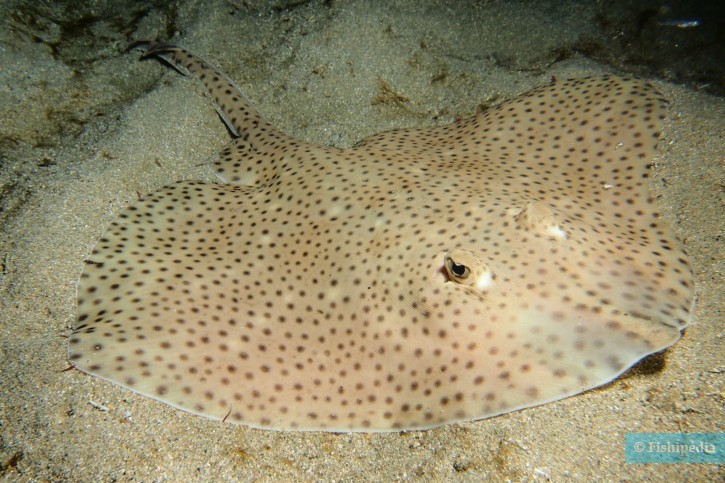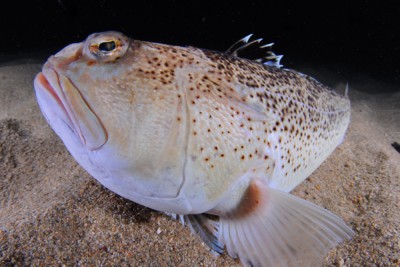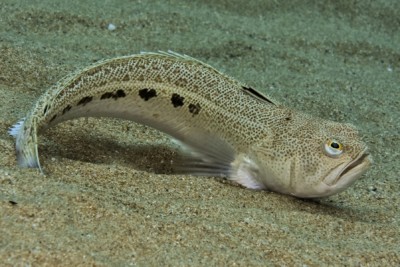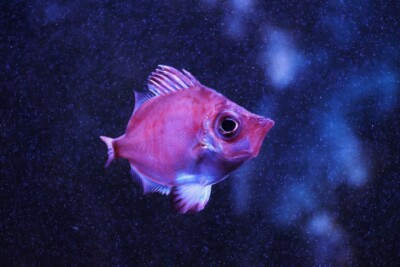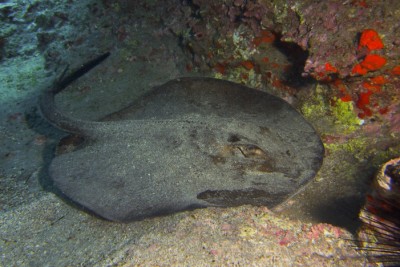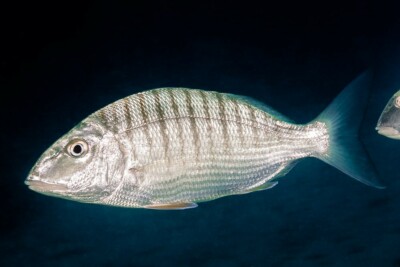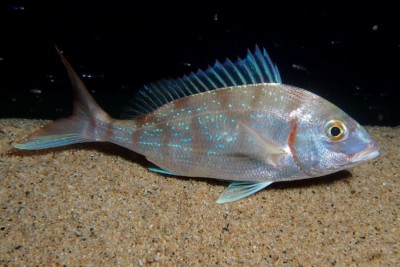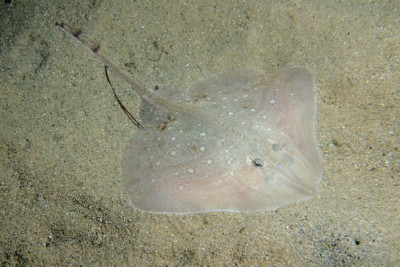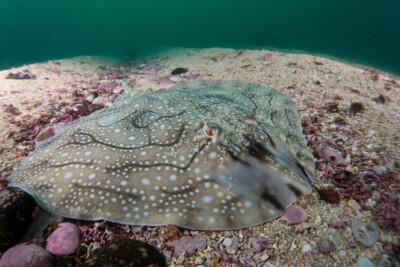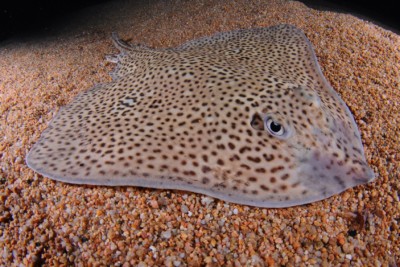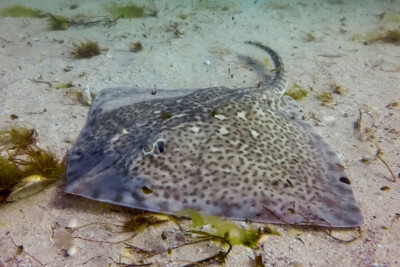blonde skate
| Scientific name | Raja brachyura |
|---|---|
| Descriptor | Lafont |
| Year of description | 1871 |
| IUCN category (World) | NT |
| Family | Rajidae |
| Genus | Raja |
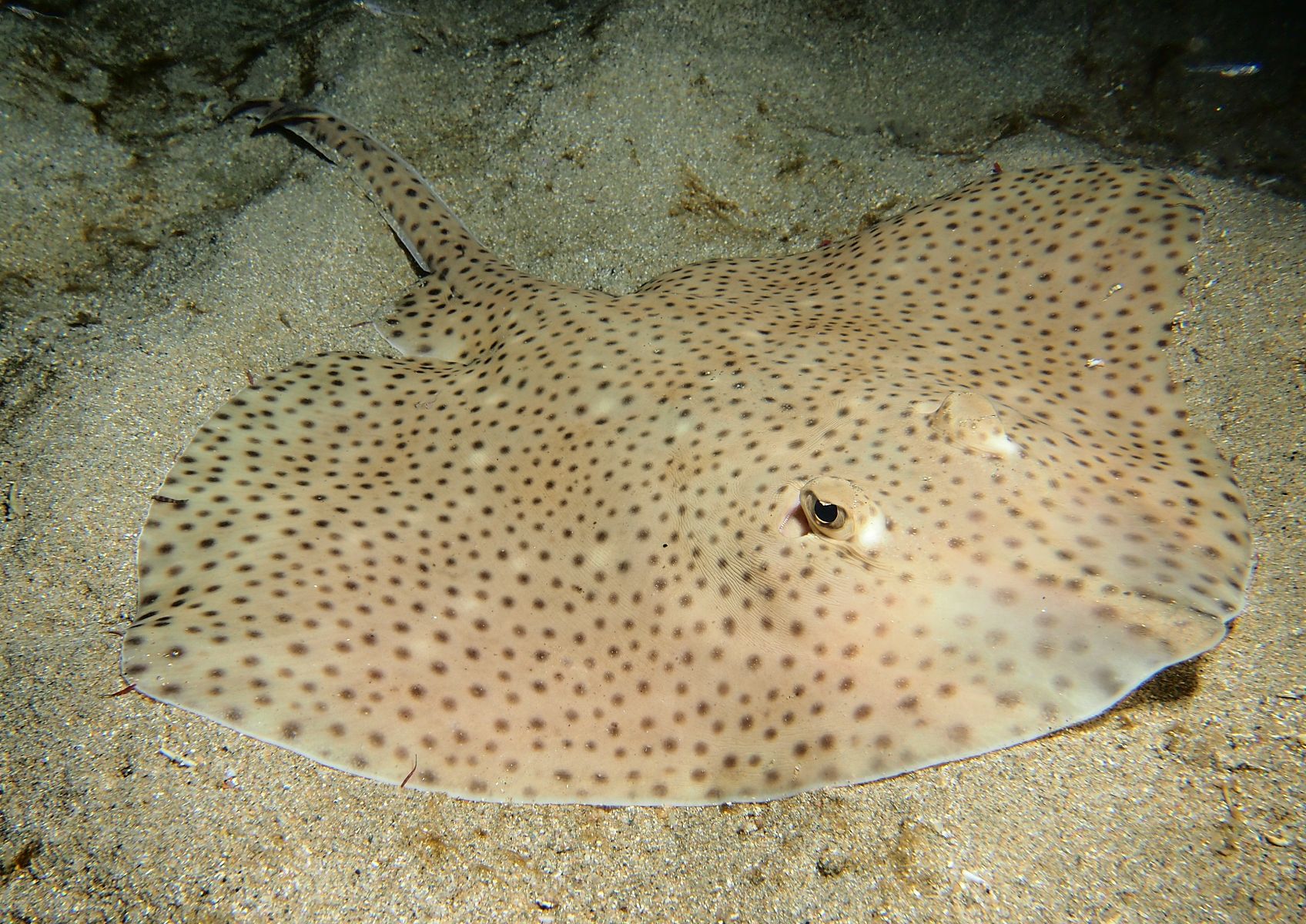

Introduction
The blonde skate is found from the Shetland Islands to Morocco. Its presence is confirmed in the western Mediterranean where it is however rare. This fish can reach over a meter and is found in sandy bottoms.
Populations are declining throughout its geographical range. It is considered almost threatened by the IUCN.
Who is it?
Morphology
-
Type
-
Average size120 cm
-
Maximum size125 cm
-
Longevity18 year
-
Mimicrysand
-
Patternponctuations
-
Type
-
Average size120 cm
-
Maximum size125 cm
-
Longevity18 year
-
Mimicrysand
-
Patternponctuations
How to recognize This fish ?
Like its relatives, the body is flattened, the snout is pointed, and the mouth is located on the underside of the body. In adults, the upper surface is completely spiny. Spines are also present on the underside, along the edges of the disc. It has between 60 and 90 teeth per rows.
The body is ocher in color and sparsely covered with small darker spots. In young individuals, the upper surface is smooth.
Sexual dimorphism
Females and juveniles have a median row of around forty spines. This row is interrupted on the backs of males.
Like other skates, males have specialized organs for reproduction: pterygopods. These are used to fertilize the female. Only one can be used at a time.
Behaviour & Life cycle
-
dietcarnivorous
-
Sociabilityliving in a group or alone
-
territorialYes
-
Way of livingdiurnal
This fish spends most of its time buried in the sand, waiting for prey or to escape predators. It feeds on a variety of benthic organisms: marine worms, crustaceans, or mollusks primarily. It can also capture small fish.
Young individuals tend to follow large objects that they may confuse with their mother.
Reproduction
-
Reproductionovovivipare
This oviparous species forms a couple to reproduce. Reproduction occurs from February to August.
Like their relatives, eggs are laid in the form of elongated capsules protected by rigid sharp horns. They are deposited in sandy or muddy bottoms. Each capsule measures about a dozen centimeters long by 6 to 9 cm wide. 40 to 90 eggs are laid each year. The juveniles hatch fully formed after a few months of incubation.
Harmless species
This species does not represent any particular threats to humans when encountered in its natural environment.
Origin and distribution
Geographic distribution & Conservation
Stock status and sustainable fishing with Ethic Ocean
In France, Brittany and Normandy are the main production regions for this family of species. 6,000 tons of all species combined are landed in France (in 2017).... Learn more
Conservation status of populations (IUCN)
What is its habitat?
Natural environment characteristics
-
Temperature12 - 25 °C
-
Depth10 - 400 m
Biotope presentation
Adults are encountered up to 400 meters deep, in sandy or mixed zones (sand and rock). The young live closer to the coast.
Species of the same biotope
To go further
Sources & Contributions
Participation & Validation
The Fishipedia team and specialist contributors are committed to providing high-quality content. However, although the information comes from scientific sources or testimonials from specialists, the cards may contain inaccuracies.

Benoit Chartrer

Julie Magnus
Translation
Translation done with the valuable contribution of our translators, who make this information available to a wider audience. We sincerely thank them for their commitment.
Bibliographic references
RAJIDAE - J.D. McEachran - M.R. de Carvalho - FAO Fisheries Synopsis - 0.
Scientific partners
Tags
Same genus
Species of the same biotope
